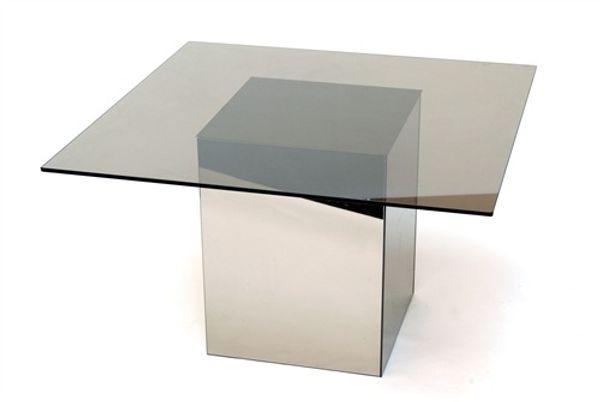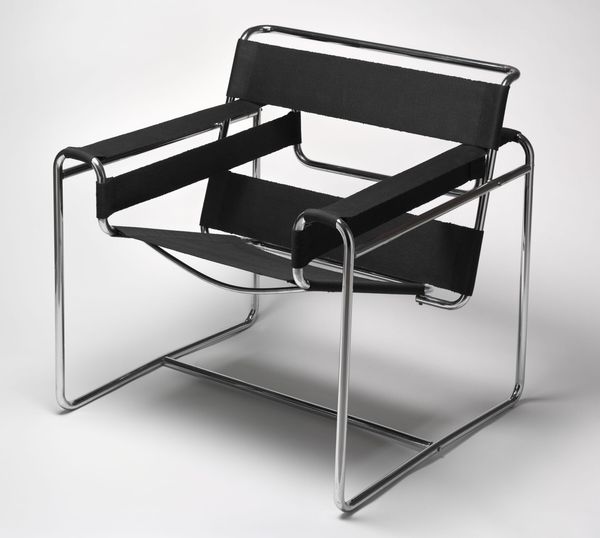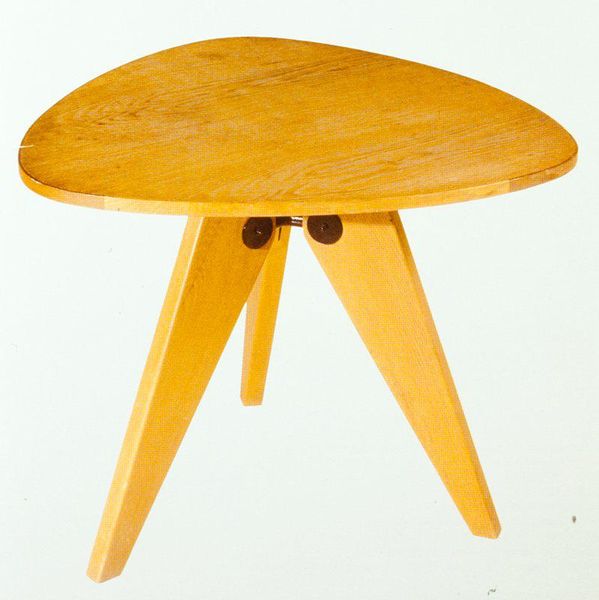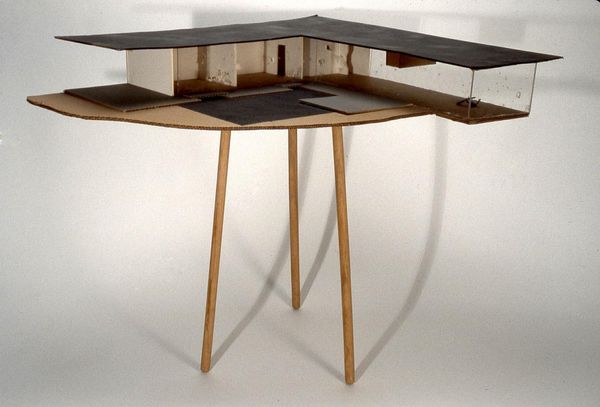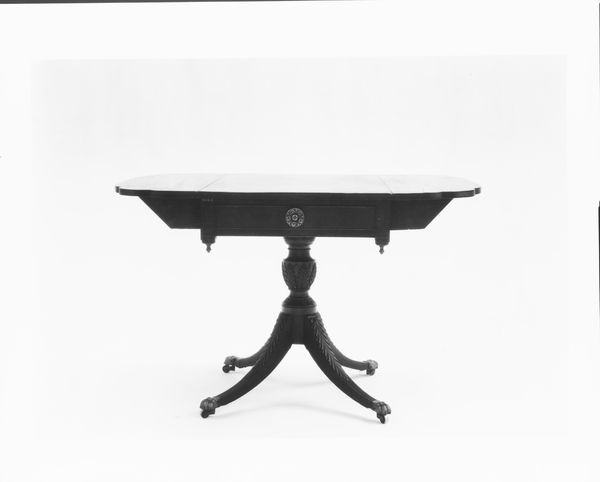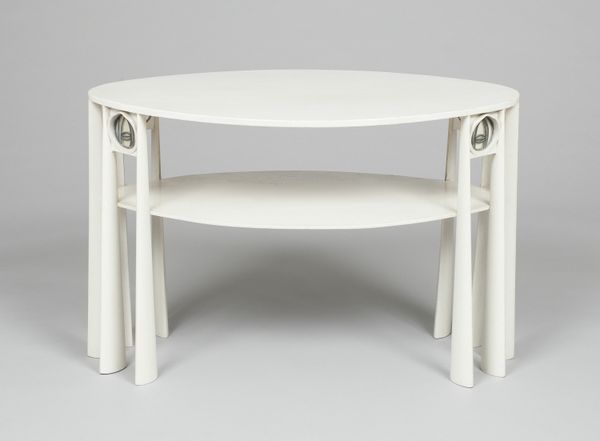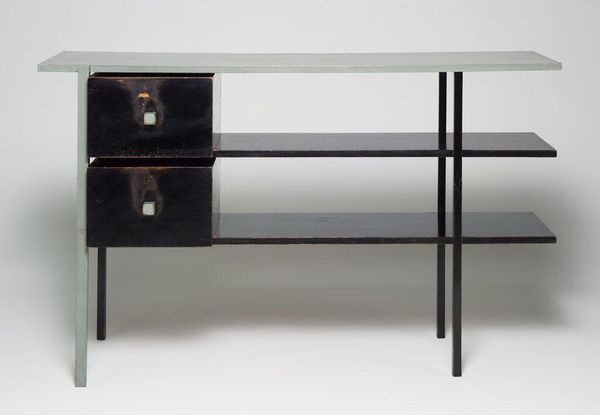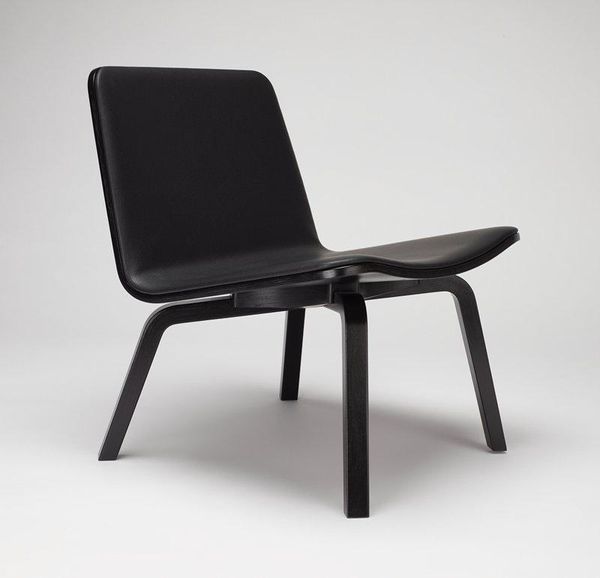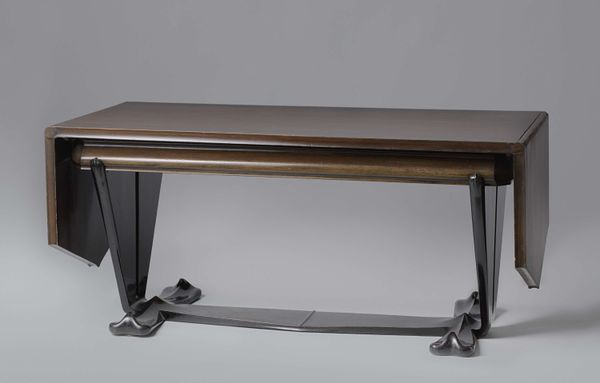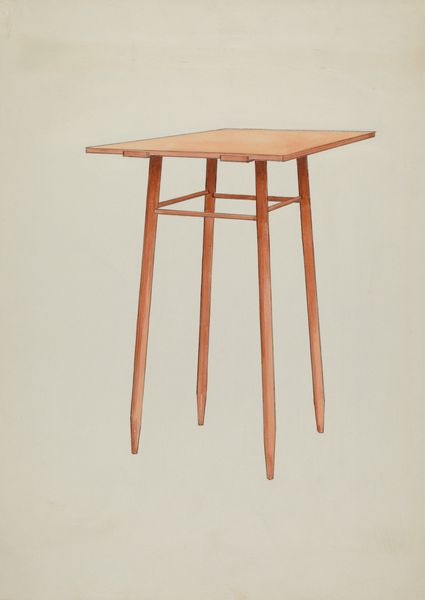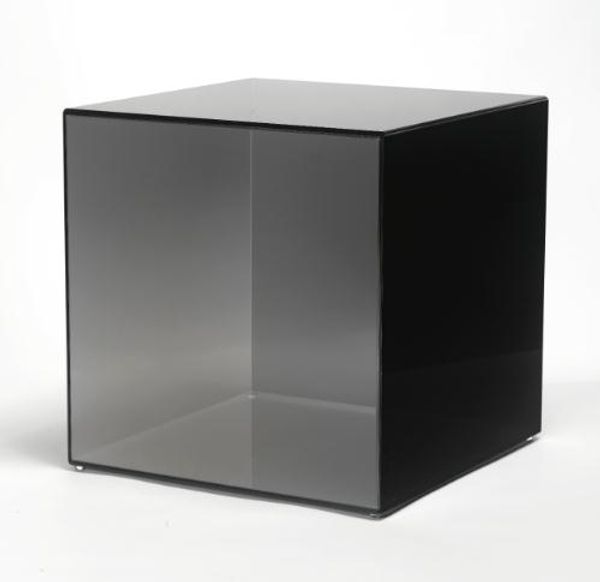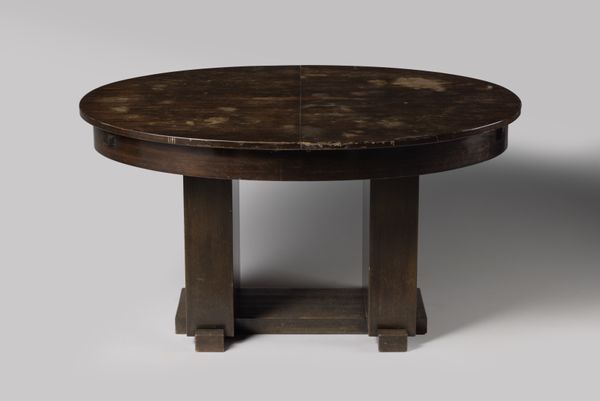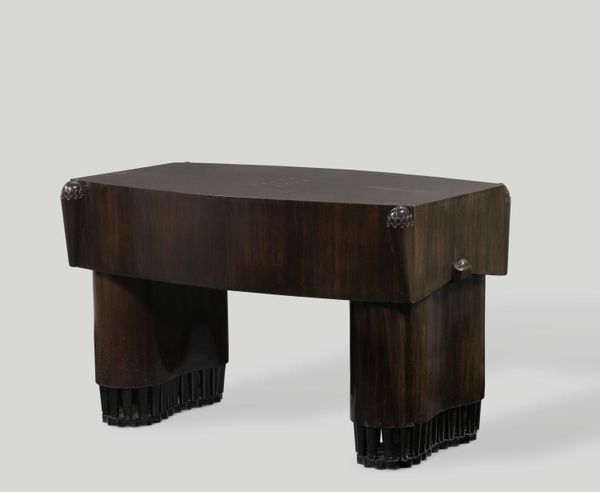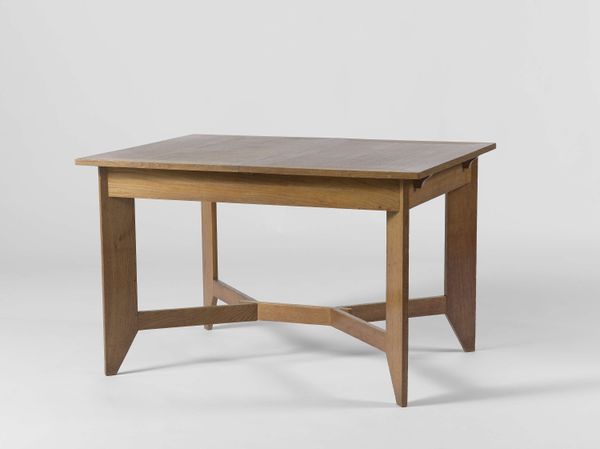
glass, wood
#
table
#
furniture
#
glass
#
geometric
#
wood
#
modernism
Copyright: Noguchi Isamu,Fair Use
Editor: Here we have Isamu Noguchi’s “Coffee Table,” created in 1945, featuring glass and wood. The design is incredibly simple yet elegant. How do you interpret this work, especially given the historical context? Curator: What strikes me is how this table functions as a potent symbol of post-war optimism. The biomorphic form of the wood base, paired with the sleek glass top, speaks of a harmonious relationship between nature and technology – a key aspiration in the reconstruction era. Notice the subtle curves and the dark wood, resembling abstracted wings or perhaps even a stylized pelvis. Doesn’t it evoke a sense of growth and groundedness? Editor: I see what you mean about the symbolism. The glass on top reminds me of clarity and a new beginning, yet I keep wondering about the symbolism and its ties to Japanese artistic philosophy. Curator: Precisely! Noguchi, with his Japanese-American heritage, consciously blends Eastern and Western aesthetics. The table's simple lines and emphasis on natural materials align with traditional Japanese design principles, subtly nodding to concepts like "wabi-sabi," finding beauty in imperfection and impermanence. Consider how this piece contrasts with the heavy, ornate furniture that preceded it. It's a radical departure! It implies a forward looking philosophy focused on organic beauty, harmony, and natural forms. The dark-toned base may even speak to resilience, don’t you think? Editor: Absolutely, that is eye-opening. The blend of Eastern and Western aesthetics to communicate something about hope is ingenius! Curator: It does provide insight on the ability to visually encapsulate historical narrative!
Comments
No comments
Be the first to comment and join the conversation on the ultimate creative platform.
